If You Build It, They Will Come—to Synagogue
The Ark Builders, a group of volunteer woodworkers, have transformed the way their congregation worships
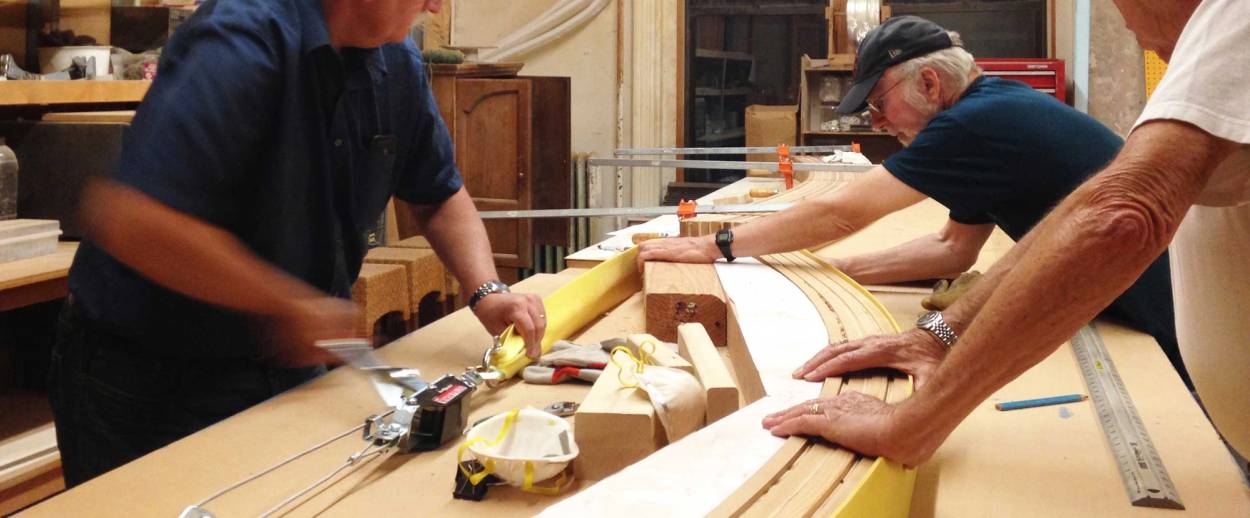



“Worship through woodworking” is an apt motto for the Ark Builders, a group of volunteers at Temple Israel of Natick, Massachusetts, who have spent more than 30 years turning ordinary plywood into something holy. They’ve created furniture, sacred objects, and even a new ark for the Torah in their synagogue, and beyond.
Mostly white-collar professionals, the 15 members of the Ark Builders range in age from 20-something to 80-plus and have no professional woodworking background. They raise money for materials through donations rather than getting funding from Temple Israel because, while the group is made up of members of the congregation, they are not an official arm of the synagogue like the Men’s Club or Sisterhood.
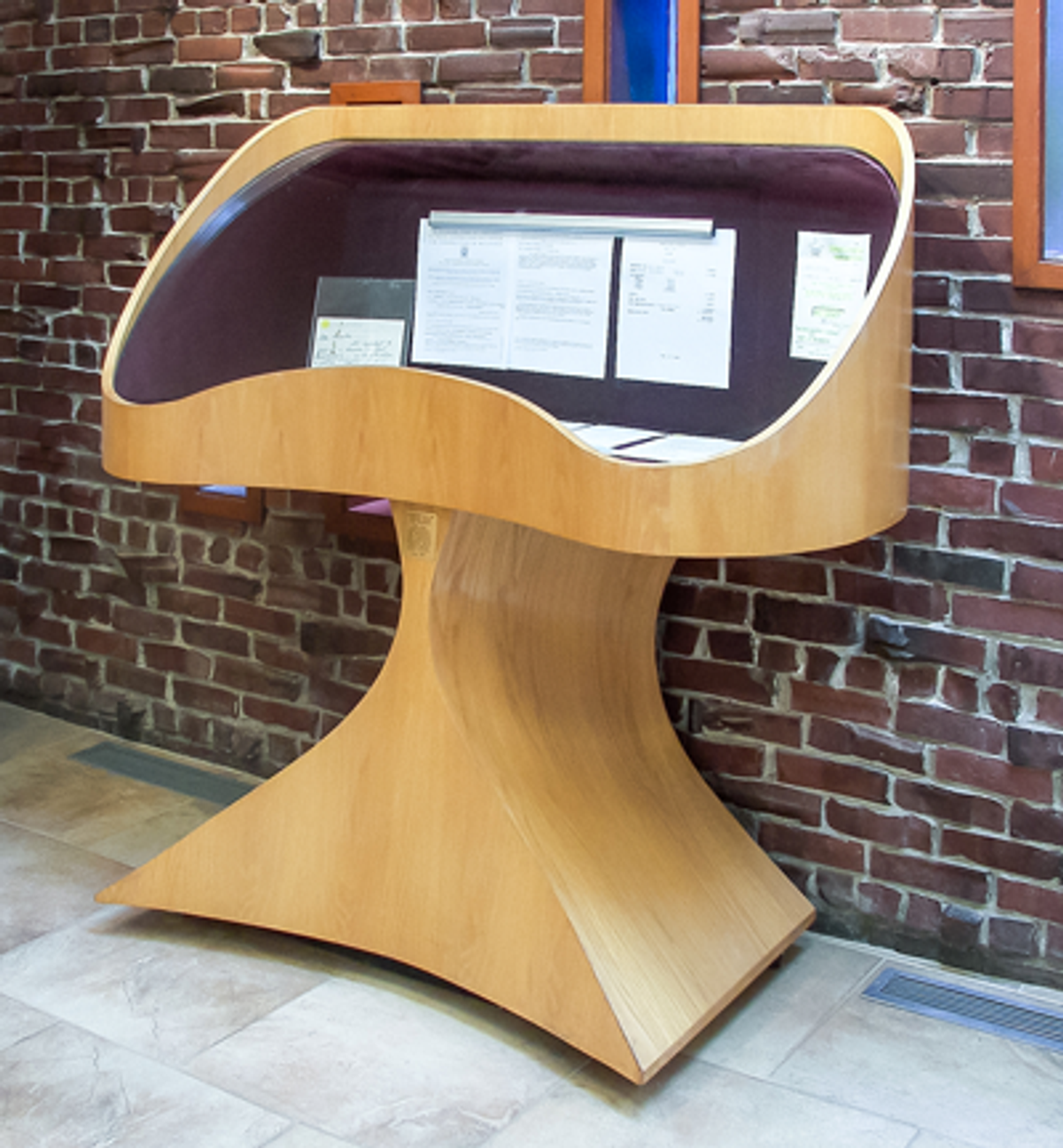
The group dates back to 1985, when Temple Israel faced increased demand for high-holiday seating. The synagogue, a Conservative congregation of 450 families, created a parallel tent service to accommodate more people, but while a second rabbi and cantor were available, it was difficult to find suitable bima furniture for the second service: a portable ark, reader lecterns, and Torah holders. Commercially available furniture was too costly, aesthetically unappealing, and would not fit in the synagogue’s limited storage space.
Jay Ball, then Temple Israel’s high-holiday seating chair, came up with a plan: “Let’s build it ourselves.” He assembled five friends—engineers, small-business owners, and corporate executives with lots of enthusiasm but little woodworking experience. Driven by an act of faith and love for their synagogue, in just two months, these amateur woodworkers designed and built collapsible bima furniture that could be stored compactly, while saving the synagogue thousands of dollars.
Serendipitously, this one-time project morphed into something bigger. In 1988, the temple’s religious school asked the group to build a portable ark. At this point, they began designing exclusively with curves, which later would become their trademark; it is far more difficult than building with straight lines, but the group found curves more interesting to work with. “Nature abhors a vacuum and a straight line,” explained Ball. “Creating things with curves can be challenging.”
Congregants began calling them “the Ark Builders.” The name stuck, and their mission was set.
“What else can we build?” became their mantra, as the Ark Builders began looking for items to build for the synagogue. Among the many objects they have since constructed are a tallit chest, a lobby display case, a portable reader’s lectern, amudim (lecterns), social-hall dividers, and the pièce de résistance: a new sanctuary ark, which the entire congregation was invited to help build. Recently, they built a new bima with a handicapped-accessible ramp.
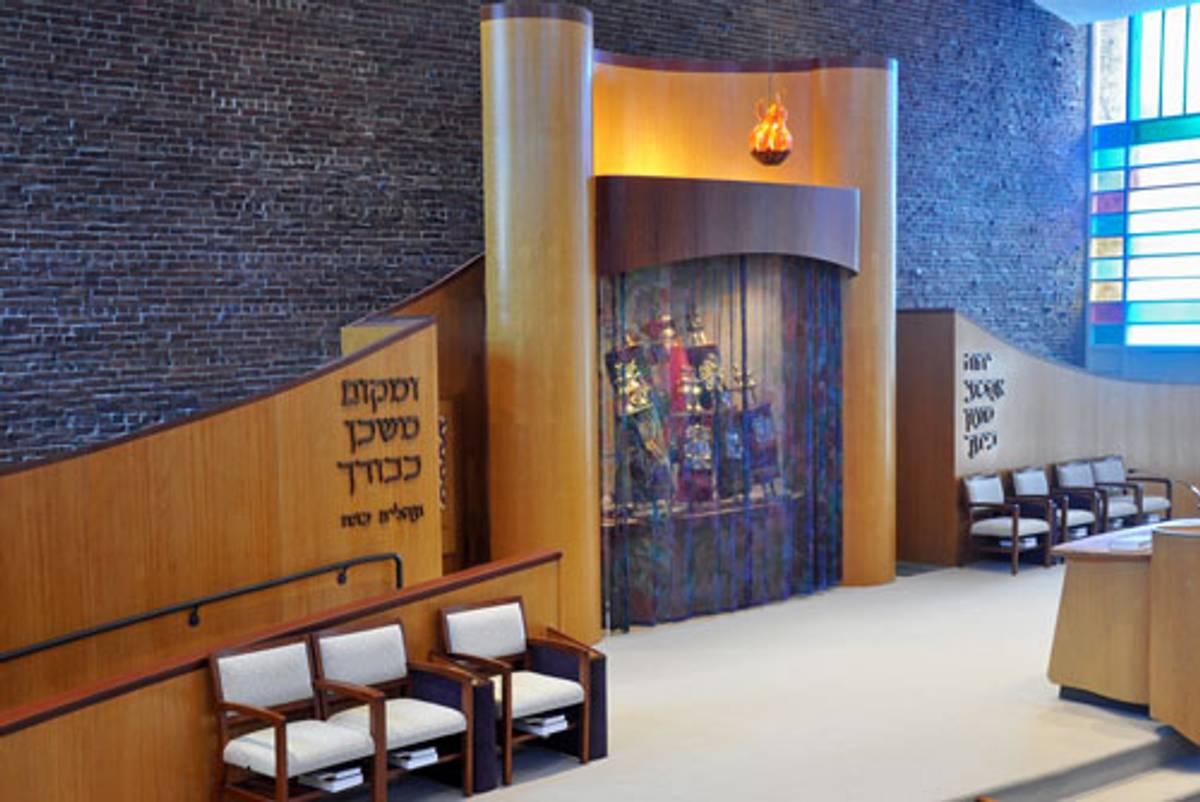
“The Ark Builders have created more than just things,” said Rabbi Daniel Liben, Temple Israel’s spiritual leader. “Over the years they have helped to shape a culture at Temple Israel in which people are encouraged to roll up their sleeves and do things themselves, whether it’s putting up a sukkah, reading Torah on Shabbat morning, or even constructing sacred furniture.”
Without mentors for guidance, the Ark Builders rely on trial and error. For example, in 1989, while building a tallit chest, they discovered that a form can retain its shape when two sheets of bendable, flexible Wacky Wood plywood are glued together—a technique they still use. (They first learned about “Wacky Wood” from a contractor who was building a curved vanity for Ball’s home.)
These days, research is conducted on the web, followed by Sunday-morning design sessions where they discuss projects, applying their abiding principle: “Any idea can be improved on.”
Over the years, some of the builders have died. David Elovitz, the group’s elder statesman, used to keep everyone’s spirits up when a job seemed tough by reminding them: “Professionals built the Titanic, but amateurs built the Ark.” With the loss of Fred Merkowitz, aka “Dr. Doom,” there is no longer anyone to point out potential design flaws and prevent serious problems. These deaths have inspired the Ark Builders to make and keep in reserve pine coffins—which they like to call “long-term underground storage containers”—like the one built overnight for their beloved Dr. Doom.
***
Their current project is a cedar bench crafted as a memorial tribute to Aaron Zev Kushner. He was the son of Suzette and Harold Kushner—Temple Israel’s rabbi laureate, author of When Bad Things Happen to Good People, and editor of the Etz Hayim Torah and Commentary.
“Last year, when Temple Israel dedicated the sanctuary to Rabbi Kushner, the Ark Builders also wanted to get into the act. We felt it was only fitting to honor Aaron’s memory,” explained Ball. “But it took us a while to come up with just the right project.”
This bench will be installed around Simchat Torah in Temple Israel’s grassy courtyard, which is used for summer services and other events.
Each element of the bench is symbolic. Both the seat and legs are made of cedar, the same wood used to construct King Solomon’s Temple (Kings I 5:24). This wood was chosen for its durability and aromatic scent, and because of the numerous biblical references to cedar. The 14-slat curved seat is a nod to the Ark Builders’ hand-craftsmanship because in Gematria, the numerological system where Hebrew letters correspond to numbers, the number 14 or Yud Dalet is also the Hebrew word for hand. The curved legs inset with the name Aharon are designed to highlight Aaron’s Hebrew name.
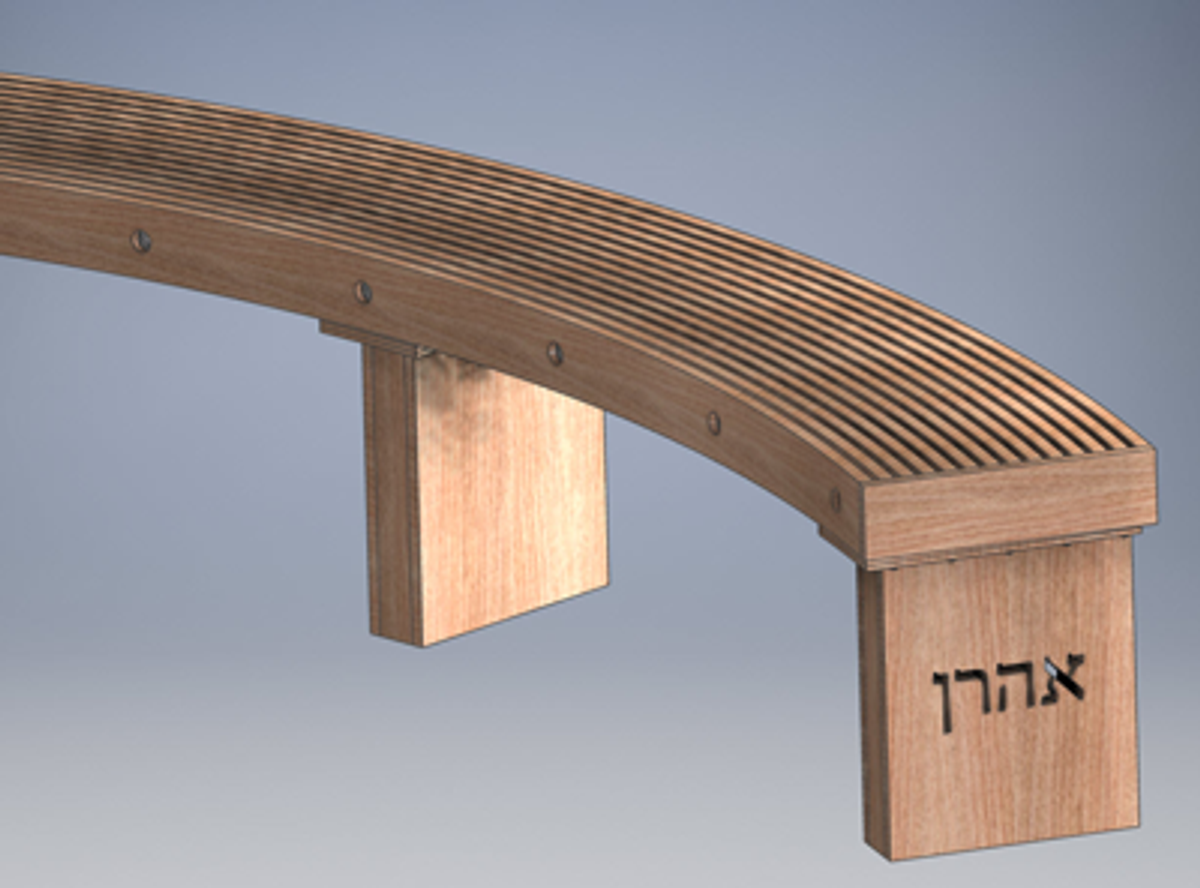
Before designing the bench, the Ark Builders researched pictures on the web, none of which met their standards. In true Ark Builder fashion, they were confident they could create a unique piece—despite never having even built a bench before, let alone one with curves. After much discussion about whether to use stone or wood, the unanimous decision was to stay faithful to the group’s origins and use wood.
After examining various alternatives during the design phase, they settled on a curved bench with slats to be constructed from wood that could withstand harsh New England winters. While the Ark Builders joked about using gopher wood like the biblical ark builder Noah, the practical choice was either redwood or cedar, with cedar the hands-down winner.
Not-so-simple challenges still remained: bending the wooden slats and keeping them bent to retain curves, constructing legs that would support even the heaviest weight, and incorporating Aaron’s name into the structure.
Bending the slats requires steaming, which the Ark Builders had never done before. Because it’s difficult to bend dry wood, the wood must be soaked overnight in water before it is steamed. The Ark Builders constructed an 8-foot-long steaming box, resembling a long tube, with hinged doors at each end to retain the steam. They also built a curved form screwed onto a 4-by-8-foot plywood sheet to keep the curved shape intact after steaming. Four slats at a time were placed in the steaming box for two hours and then inserted into the curved form to cool for a day or more. This process was repeated until all 14 slats were bent and assembled with stainless-steel bolts.
For aesthetic reasons, the Ark Builders decided to cut the name “Aharon” all the way through the 3 1/2-inch-thick curved legs rather than simply engrave it into the surface. After researching various techniques, they determined that the best way to achieve easy-to-read Hebrew letters was with laser-cutting, a technique new to them.
***
The Ark Builders have also brought their volunteer skills to the wider community with such projects as a reception desk for a local food pantry, a play castle for the town library, a table for a neighboring church, an ark for a Jewish day school, a tallit case for a college Hillel in Connecticut, and a reading lectern for a Manhattan synagogue. They just built a bookcase/display case for a local historical society, repaired a vintage early 20th-century ark, and refurbished an old ark for a senior-living community.
Their most recent project, dedicated this May, was a puppet theater for the Christa McAuliffe Branch Library in Framingham, Massachusetts, which is named after the teacher-astronaut who perished in the Challenger space shuttle accident. Soon after the building’s opening in 2016, the Ark Builders volunteered their expertise. The puppet theater was the culmination of five months of labor by a three-person team, and, like all projects, it is built of curved Wacky Wood.
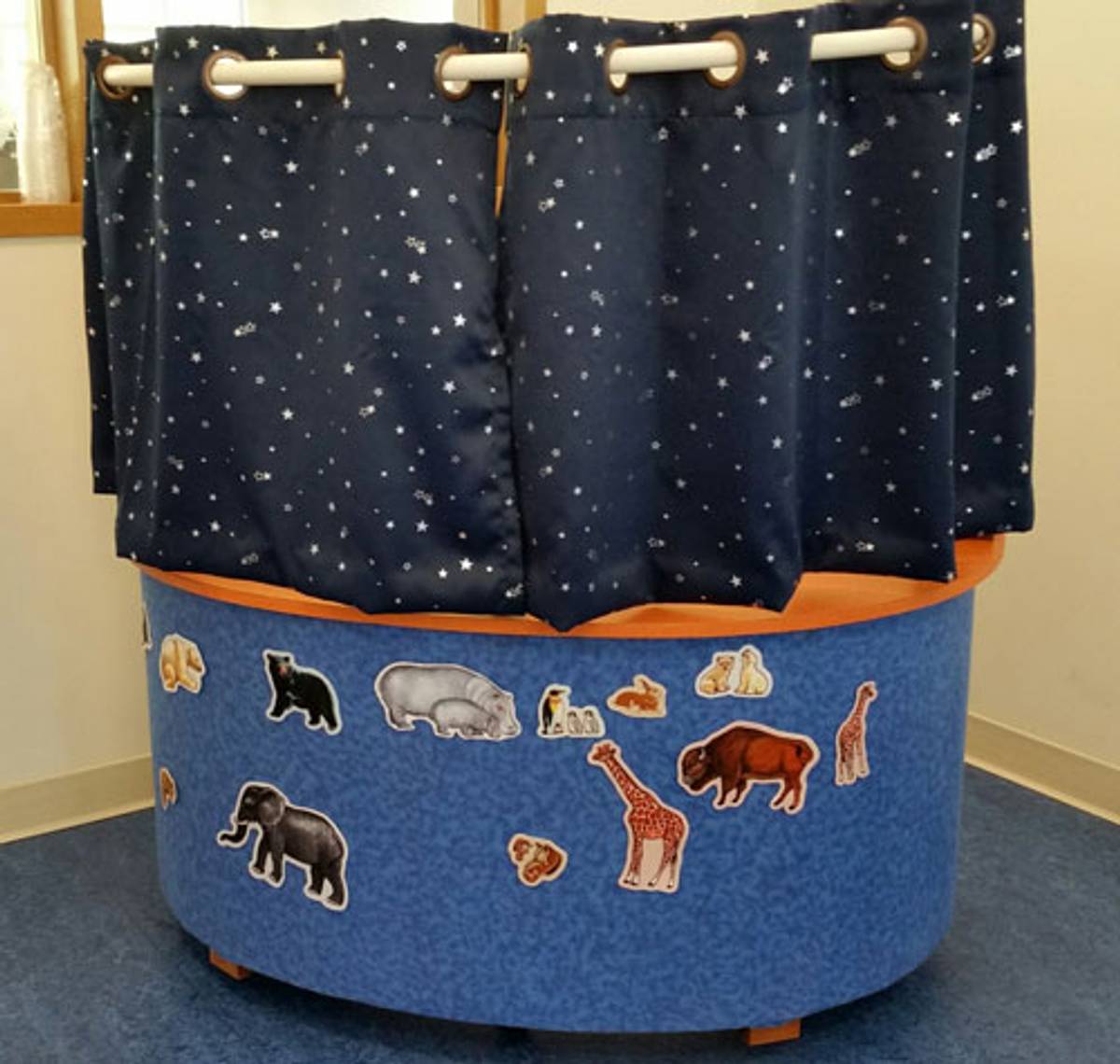
“I wanted something that would work in our space and be fun, different, creative, and that kids would not have at home,” explained children’s librarian Robin Frank. “A puppet theater was my No. 1 choice. It has exceeded my expectations. I have watched children of all ages gravitate toward it.”
Meanwhile, the projects keep coming. A senior-living community south of Boston wants a new ark. A day school in Greater Boston needs help building a tallit/tefillin storage unit. And a Baltimore shul has requested a page-number display board.
“I’m proud of the things we’ve built and of the strong friendships we’ve forged along the way, both within and outside the group,” said Ball, who has co-authored a book on the group. “I’ve always been a part of the Ark Builders, and the Ark Builders will always be a part of me.”
Paula Jacobs is a writer in the Boston area.